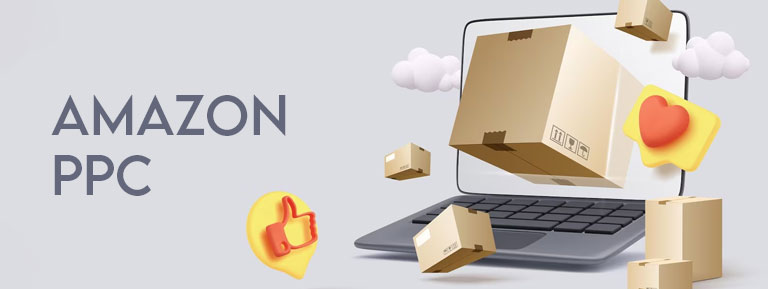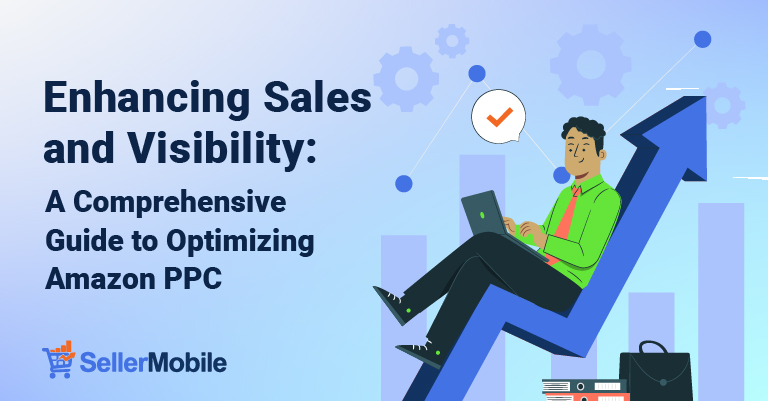Maximizing Success with Amazon PPC Optimization
In the rapidly evolving world of e-commerce, Amazon PPC has become an indispensable tool for businesses aiming to expand their customer base and drive revenue growth.
With a vast pool of potential customers, competition is fierce and relentless, especially with the emergence of Amazon FBA aggregators.
Large brands and well-funded companies invest heavily in advertising to scale their profits, leaving independent sellers struggling to keep pace.
This trend is evident in the numbers, with the average Amazon CPC increasing from $0.76 in 2020 to $0.98 in 2022, and Amazon generating a staggering $37.7 billion in advertising revenue alone.

In this highly competitive market, sellers must employ smart tracking and optimization techniques for their Amazon ads to achieve optimal results.
This article presents a set of actionable steps designed to help sellers navigate the dynamic and challenging landscape of Amazon advertising, ultimately leading to profitable outcomes.
Unlock the secrets to Amazon PPC optimization and drive your success to new heights!
Boost Your Amazon Sales with These 12 Proven Strategies for Amazon Ad Optimization

In the fiercely competitive landscape of e-commerce, every penny spent on Amazon advertising matters. To thrive and achieve the best results, it’s vital to optimize your advertising campaigns effectively.
Here’s a step-by-step guide to optimizing your Amazon ads, leading to improved ACoS (Advertising Cost of Sales) and maximizing your return on ad spending.
1. Define Clear Business & Campaign Goals:
Before diving into PPC campaigns, outline your key business goals. Whether it’s increasing market dominance, expanding your product portfolio, or raising brand awareness, having well-defined goals allows you to tailor your actions accordingly.
2. Create an Effective Campaign Structure:
Organize your PPC campaigns logically to reduce confusion and enhance performance. Separate campaigns for different products and maintain consistent and detailed naming conventions. Utilize different ad groups for various targeting types.
3. Optimize Product Listings with Relevant Keywords:
Ensure your product listings contain keywords that match customer search intent. Utilize tools like SellerApp Amazon Keyword Research to identify high-performing keywords and add them strategically to your titles, descriptions, and bullet points.
4. Utilize High-Performing Auto-Campaign Keywords:
Harvest successful keywords from your automatic campaigns to enhance the performance of your manual Amazon PPC campaigns. Identify search terms with good sales and low ACoS, then move them to your manual campaigns for increased conversions.
5. Use Negative Targeting to Minimize Wasted Ad Spend:
Analyze your ad campaigns and add search terms with high impressions but low clicks or no sales as negative keywords. Review the performance of each targeting option and keep the best-performing one while removing duplicates to optimize performance.
6. Calculate Target ACoS and Optimize Bids:
Calculate your target ACoS based on your business goals and adjust bids on keywords accordingly. Lower bids on underperforming keywords if ACoS is higher than the target, and increase bids on over-optimized keywords to maximize conversions.
7. Set a High Budget for Peak Conversion Times:
Identify peak sales days and hours using Seller Central’s sales dashboard and set higher ad budgets during those periods using the dayparting tool in SellerApp. This helps optimize budget utilization and reduces wasted ad spending.
8. Bid Aggressively on Alternative Keywords:
Once a keyword ranks well and generates sales, bid aggressively on alternate keywords with high conversion rates to improve organic rankings. Repeating this process for different high-converting keywords can significantly increase organic sales and lower ad spending.
9. Bid for Top Search Placement & Branded Keywords:
Depending on your goals and budget, bid aggressively on non-branded keywords for top search placement to boost brand awareness. Additionally, bid on branded keywords with low CPC and high conversion rates to improve overall campaign RoAS.
10. Select the Right Product for Sponsored Brand Ads:
Optimize your Sponsored Brand ads by featuring your best-selling product first, followed by a product with good conversion rates but low visibility, and finally, a newly-launched product to drive traffic and increase sales.
11. Bid High on High-Converting Products in Product Targeting Campaigns:
Use the Sponsored Product targeting report to identify high-converting products in your product targeting campaigns. Allocate more budget to campaigns with high conversions and stop low-converting campaigns to maximize ROI.
12. Run Product Targeting Campaigns for Listings with External Traffic:
Target customers who are already interested in your products by running Product Attribute Targeting (PAT) campaigns on listings with external traffic. This helps focus your advertising efforts on potential customers who are more likely to convert.
By implementing these proven strategies, you can optimize your Amazon advertising campaigns effectively, boost sales, and achieve maximum ROI in this highly competitive marketplace.

CONCLUSION
In conclusion, optimizing Amazon PPC campaigns is crucial for businesses to enhance sales and visibility in the fiercely competitive e-commerce landscape. With the rising competition and increasing cost per click on Amazon, sellers must adopt smart tracking and optimization techniques to achieve profitable outcomes.
This comprehensive guide has provided 12 proven strategies for Amazon ad optimization:
1. Define clear business and campaign goals.
2. Create an effective campaign structure.
3. Optimize product listings with relevant keywords.
4. Utilize high-performing auto-campaign keywords.
5. Use negative targeting to minimize wasted ad spend.
6. Calculate target ACoS and optimize bids.
7. Set a high budget for peak conversion times.
8. Bid aggressively on alternative keywords.
9. Bid for top search placement and branded keywords.
10. Select the right product for Sponsored Brand ads.
11. Bid high on high-converting products in product targeting campaigns.
12. Run product targeting campaigns for listings with external traffic.
By following these strategies, sellers can maximize their return on ad spending, improve ACoS, and drive sales growth on Amazon. The key is to continuously monitor and optimize campaigns based on data-driven insights, adapting to market trends and customer behavior.
Success on Amazon requires dedication, perseverance, and a willingness to adapt to the ever-changing landscape. By unlocking the secrets to Amazon PPC optimization, sellers can position themselves for long-term success and capitalize on the vast opportunities offered by the world’s largest e-commerce platform.





